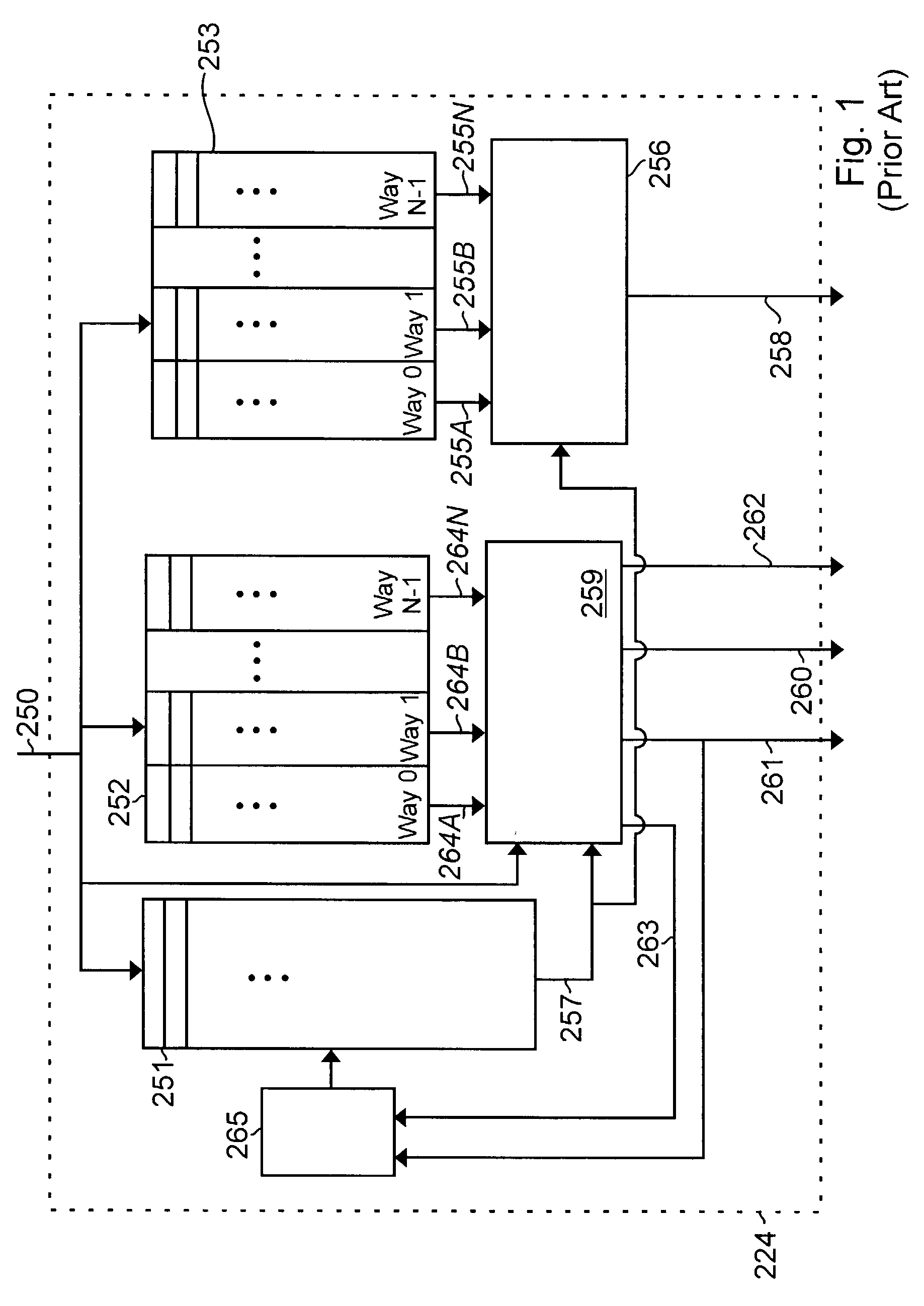Instruction cache way prediction for jump targets
a cache and target technology, applied in the field of cache prediction, can solve the problems of large size per bit of this type of memory, the access times of main memory, and the instruction data that have not yet matched the cpu, and achieve the effect of facilitating the retrieval of tag address and data bytes
- Summary
- Abstract
- Description
- Claims
- Application Information
AI Technical Summary
Benefits of technology
Problems solved by technology
Method used
Image
Examples
Embodiment Construction
[0022]FIG. 1 illustrates a prior art cache architecture 224 in accordance with U.S. Pat. No. 5,752,069, entitled, “Superscalar microproce [sic] prediction structure,” which issued to Roberts et al. It is believed that a review of the matter disclosed by Roberts et al. may be convenient for an appreciation of the present invention. It is noted that although the following discussion of the prior art describes the cache way prediction structure with respect to a data cache, a similar structure is contemplated for instruction caches as well.
[0023]The prior art cache architecture 224 is comprised of a cache tag array 252 and a cache data array 253, with each of these arrays being N-cache way set associative. Output ports are provided on the cache data array 253 for providing data bytes from the cache data array 253 to a set of cache way data buses 255A-255N (collectively referred to as cache way data buses 255). Such that for a clock cycle, N sets of data bytes are provided from output p...
PUM
 Login to View More
Login to View More Abstract
Description
Claims
Application Information
 Login to View More
Login to View More - R&D
- Intellectual Property
- Life Sciences
- Materials
- Tech Scout
- Unparalleled Data Quality
- Higher Quality Content
- 60% Fewer Hallucinations
Browse by: Latest US Patents, China's latest patents, Technical Efficacy Thesaurus, Application Domain, Technology Topic, Popular Technical Reports.
© 2025 PatSnap. All rights reserved.Legal|Privacy policy|Modern Slavery Act Transparency Statement|Sitemap|About US| Contact US: help@patsnap.com



